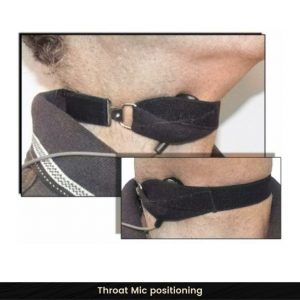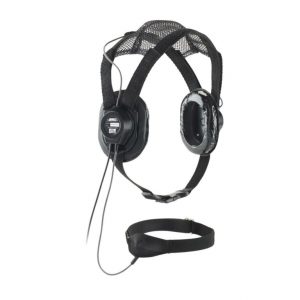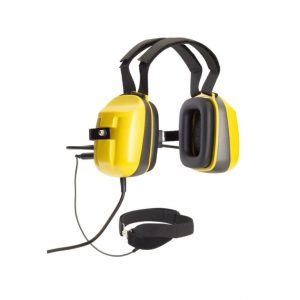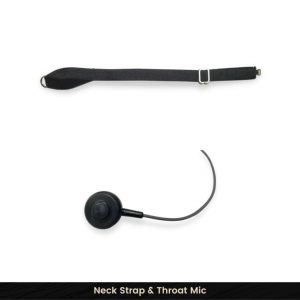Use And Care For Throat Microphones
 APPLICATIONS:
APPLICATIONS:
If the headset is to be operated in conjunction with a facemask of any type, our high intelligibility throat microphone should be used. Where noise levels exceed 120dBC or where contact noise from clothing against the microphone is to be eliminated the P/N 046961 throat microphone is an appropriate choice.
 MICROPHONE USE:
MICROPHONE USE:
Good articulation of your words is very important when using the Throat Microphone since it picks up sound predominantly from the voice box and not from the front of the mouth where many consonants are produced. Shouting does not improve the microphone performance. The wearer may even have to make an effort to talk quietly for the best results in high background noise level areas. User should do some test communication to determine best voice level to use.
Although most persons can use the throat microphone, it is not for everyone. Individuals with thick tissue layers (i.e., muscle, fat) on the larynx may have difficulties and probably should not use it in the interest of safety. Suitability should be determined before going to the job site.
 POSITIONING OF THE MICROPHONE:
POSITIONING OF THE MICROPHONE:
The microphone generally sounds the best when positioned on the side of the larynx. Each individual must determine the best location. Without the neck strap or band attached, hold the microphone with gentle pressure on the larynx. While speaking to another person on the communications system, vary the location of the microphone and allow the listener to determine improvements in intelligibility. Once familiar with the equipment, the best position can be found quickly for each person.
DONNING:
If desired, the throat mic wire may be worn on either side of the neck by mounting the unit with the “tail” facing down and rearward and passing the connector behind the neck, if necessary to the earcup mounted jack.
 Neck Strap:
Neck Strap:
Adjust strap length such that pressure on the larynx is light but enough to hold it in position. If correctly adjusted, it will not impair circulation. A tight neckband will not improve the microphone’s performance – too much pressure will cause distortion and lower output.
Microphone Care:
The microphone should not be subjected to shocks such as by dropping.
The unit may be wiped clean with soap and water and the microphone may even be held under gently running water. Note: however, that pressure must not be exerted on the microphone element while submerged – DAMAGE TO THE MICROPHONE WILL RESULT. (Pressure equalization holes for altitude are present but may not be visible).
